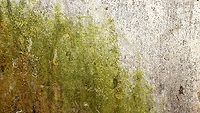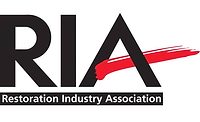Mould Remediation Down Under: An Industry Update from Australia

As an instructor for various levels of mold remediation training courses, I have had the distinct pleasure of guiding students in locations across North America, Europe, and the Caribbean. Recently, I had my first opportunity to offer a class in Australia. Although I have had Australian nationals in classes in the past, this was the first situation where I could focus on the peculiarities of mold remediation in Australia.
The good news is that the mold remediation industry in Australia is very similar to mold remediation in other advanced countries. The bad news is that the Australian market is similar to other markets. To explain, mold remediation contractors around the world are clearly divided into those who understand, appreciate, and conform to the industry standard of care, and those who minimize the health risk of fungal contamination and conduct projects in ways that jeopardize their own crew as well as building occupants.
Of course, it is the contractors that work diligently to follow the standard of care that come to advanced mold remediation training. It is also telling that they appreciate the training in conjunction with Australia’s largest restoration conference as they are trying to maintain their skills in many specific areas of cleaning and restoration.
Australian Guidelines
In preparation for teaching a class in a foreign country it is best to familiarize oneself with relevant documents from that area. In Australia there is one such publication titled “Australian Mould Guidelines”. Rather than being a consensus standard, industry association publication, or government regulation, this set of recommendations was put together by a private consultant. Although it bears a striking resemblance to the New York Guidelines, some of the language has been changed to give it a different feel. For example, the New York City Guidelines for fungal control break down remediation projects based on the amount of visible mold present—designated as levels I-IV. The Australian document also uses the amount of visible mold as the primary criteria for approaching remediation projects, however, they divide their recommendations into six grades.
Fortunately, the contractors in the advanced class understood that this basic approach to mold remediation project management based on the amount of visible mold is both old-school and potentially dangerous. They were well aware of the approach popularized in the S520 Standard, which treats all projects with physical mold as Condition 3. As such, it was clear that the majority of the contractors in class were using isolation techniques and engineering controls for virtually all mold remediation projects.
Some Differences
Despite the similarities to other high performing contractors around the world, there were some notable differences. The conversations in class made it quite clear that the use of a one-stage decontamination chamber at the entrance to a mold remediation project is not as common in Australia as it is in North America. From my small sample size of one class, it also appears that the use of magnehelic gauges to monitor negative pressure inside enclosures is not as accepted a practice as it is in Europe.
Personal protective equipment also appears to differ on mold remediation projects. While the students seemed to understand and appreciate the need for effective PPE during mold remediation, the project photos shared by a number of attendees indicated heavier reliance on filtering facepieces over the use of full face-respirators, which are more common in America, during removal of contaminated finish materials. From the American perspective, there were a surprising number of photographs of individuals conducting mold cleaning while wearing filtering facepieces, no eye protection, and street clothes rather than some form of protective/disposable suit.
A Global Industry
Despite these differences, the experience in Australia once again pointed out that far-flung places in the world, now more than ever, are connected. Good contractors know about a standard of care for mold remediation and try to follow it, regardless of whether they are dealing with mold or mould. Australian contractors report that their businesses are being pressured by insurance representatives who do not appear to appreciate the danger of mold or the details of the current standard of care. Worse, they understand that they are losing work to unscrupulous contractors who advertise mold remediation but actually deliver “rip and skip” or “spray and pray” services that are often worse than no remediation at all. Unfortunately, some bad attitudes seem to cross political boundaries, particularly when there is money to be made.
We hope that offering advanced training in all parts of the world reduces these sorts of danger for consumers. If the students in the recent class in Australia are any indication, we are moving closer to that goal.
Looking for a reprint of this article?
From high-res PDFs to custom plaques, order your copy today!








